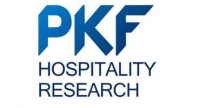
Hotel Spa Departments Generate Healthy Profits According to PKF Consulting | CBRE Hotels
Benefits Extend Beyond the Spa Department |
 |
Hotel Spa Departments Generate Healthy Profits According to PKF Consulting | CBRE Hotels
Benefits Extend Beyond the Spa Department |
Category: Worldwide - Industry economy
- Figures / Studies - Trends / Expert's advice
This is a press release selected by our editorial committee and published online for free on 2015-10-26
Hotel spa departments continue to contribute to the revenue and profit growth of U.S. hotels. According to the 2015 edition of Trends in the Hotel Spa Industry, hotel spa department revenues increased by 5.1 percent in 2014, while spa department profits grew 10.5 percent.
“The benefit of having a hotel spa can go beyond the direct financial contributions of the spa department,” said Andrea Foster, managing director for PKF Consulting|CBRE Hotels (PKFC) and director of the firm’s spa and wellness consulting practice. “When we compared the performance of spa properties with comparable hotels in PKFC’s Trends in the Hotel Industry database, we found that the spa hotel sample had a higher ADR in 2014 and was able to increase its room rates to a greater degree. This does not suggest causation; rather, it suggests a reasonable conclusion that guests find greater value in properties that have more extensive amenities and services available, thus creating the ability to increase rates to a greater extent.”
Spas also can help position a property as a healthy hotel if it also offers beneficial lifestyle options within other departments – rooms, food and beverage, retail and more – that support guests’ desire to maintain a healthy routine. “More and more travelers want to maintain their fitness and nutrition routines while on the road,” Foster added.
PKF Consulting|CBRE Hotels has surveyed the profitability of U.S. hotel spa performance for nine years. The annual review compiles 19 discrete revenue and expense items within spas operated by U.S. hotels. Not included in the survey are hotel spa operations that are leased to an outside party, day spas or destination spa properties.
Spa RevenuesSpa revenues increased by 5.1 percent for the overall survey sample, but differences were observed based on property type. Spas operated within urban hotel properties enjoyed a stronger 7.0 percent gain in revenue, compared to 4.4 percent at resort hotel spas. “This is consistent with the strong performance of the primary urban markets and the return of group demand,” Foster noted.
Massage services continue to generate the most revenue for hotel spas. In 2014, massage revenue comprised 54.5 percent of total spa department revenue, followed by sales from skin care/body work (17.1 percent), salon services (10.4 percent) and retail operations (9.9 percent). Revenues from these major sources all increased in the 4.0 to 5.0 percent range from 2013 to 2014.
Leading in spa revenue growth on a percentage basis in urban hotels were the fees generated from selling memberships to local patrons. “Revenues from local residents and members contribute 59 percent of the revenue earned by urban hotel spas compared to just 38 percent at resort hotels,” Foster said.
Spa Expenses and ProfitsIn 2014, the cost of operating a hotel spa increased by 3.4 percent. Spa managers were able to suppress expense growth by limiting the rise in labor costs to just 2.9 percent. “Labor costs are the greatest expense within hotel spa departments, comprising 57.3 percent of total department revenue. This includes the cost of spa therapists and technicians who are both direct hotel employees and independent contractors,” Foster explained.
With revenues growing greater than expenses, hotel spa departments posted a healthy 10.5 percent increase in department profits during 2014. “Benefiting from the stronger gains in revenue, urban spas enjoyed a 13.1 percent boost on the bottom-line, which is greater than the 9.8 percent profit gain achieved by resort hotel spas,” Foster noted.
Spa department profit margins averaged 25.4 percent for the overall sample. Resort hotels (28.1 percent) were more efficient than urban hotels (18.4 percent) in converting spa revenues to profits. Higher wage rates in the nation’s major cities contributed to a greater labor cost burden at urban hotel spas.
A Healthy FutureFavorable economic and demographic trends foretell a very bright future for hotel spas. Occupancy rates at the upper-priced lodging segments in which most hotel spas operate are forecast to achieve all-time record levels from 2015 through 2017. “Increased guest counts, combined with a growing desire for maintaining healthy lifestyles and enjoying unique experiences while traveling, should result in a continuation of solid gains in spa department revenues and profits,” Foster concluded.
To purchase a copy of the 2015 Trends in the Hotel Spa Industry report, please visit: https://store.pkfc.com/trends-in-the-hotel-spa-industry.
About PKF Consulting|CBRE HotelsPKF Consulting|CBRE Hotels (www.pkfc.com) specializes in the hospitality industry and has offices in New York, Boston, Indianapolis, Chicago, Philadelphia, Washington DC, Atlanta, Jacksonville, Houston, Dallas, Los Angeles, Bozeman, Seattle, and San Francisco.
|
|




